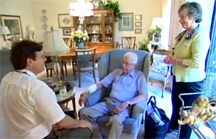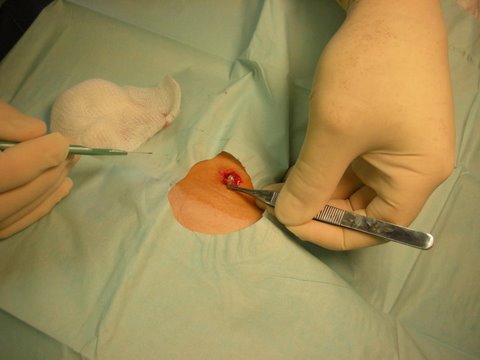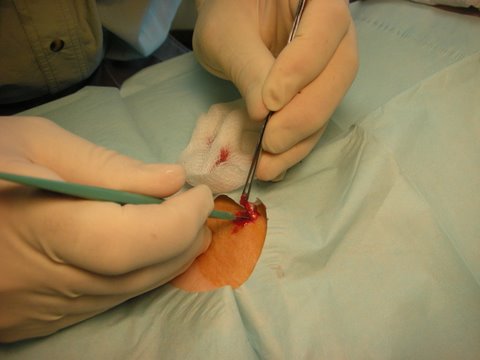February 17th, 2010 by DrRob in Better Health Network, Health Policy, Opinion
6 Comments »

I am going to state something that is completely obvious to most primary care physicians: I do not accept Medicare and Medicaid patients because it is good business, I accept them despite the fact that it is bad business.
In truth, I could make that statement about insurance as a whole; my life would be easier and my income would be less precarious if I did not accept any insurance. If I did, I would charge a standard amount per visit based on time spent and require payment at the time of that visit. This is totally obvious to me, and I suspect to most primary care physicians. A huge part of our overhead comes from the fact that we are dealing with insurance. A huge part of our headache and hassle comes from the fact that we are dealing with insurance. Read more »
*This blog post was originally published at Musings of a Distractible Mind*
February 16th, 2010 by DrRich in Better Health Network, Health Policy, Opinion
1 Comment »

In his past few posts, DrRich has offered a substantive criticism of the new code of medical ethics which has now been formally adopted by over 120 physicians’ organizations across the globe. (See here, here and here.) Fundamentally, the New Ethics abrogates the physician’s classic obligation to always place the welfare of their individual patients first, by adding to it a new and competing ethical obligation (called Social Justice), which requires doctors to work toward “the fair distribution of healthcare resources.”
The New Ethics was explicitly born of the frustration felt by physicians as a result of the multitude of coercions the payers have thought up to force them to place the needs of the payers (the proxy for “society”), ahead of the needs of their patients. Thanks to the New Ethics, doctors can now bend to this coercion without violating their ethical standards. Read more »
*This blog post was originally published at The Covert Rationing Blog*
December 12th, 2009 by Dr. Val Jones in Health Policy, Opinion
2 Comments »

My Practice Partners On A House Call
My friend and Better Health contributor, Toni Brayer, recently polled her blog audience about their opinion of concierge medicine. She describes concierge medicine this way:
Also known as “retainer” practice, concierge is a growing type of medical practice where the patient pays the physician an up front fee (retainer) for services. The fee can range from $100/month to $20,000/year, depending upon the practice and the services offered. The fee usually covers all visits to the doctor, phone calls, more prompt service and email access. Labs, tests, Xrays, referrals to specialists, and hospitalization are not included.
Her readers responded: Read more »
August 5th, 2009 by AlanDappenMD in Primary Care Wednesdays
4 Comments »
When I describe our medical practice, most people really like the concept: Our medical team at DocTalker (board certified doctors and a nurse practitioner) answers all the incoming patient phone calls and emails directly, solving over 50% of our patients needs remotely and conducts office visits and house calls when needed even at night and on weekends. People ooh and aah, offering praise: “What a good idea!” … “You’re really ‘retro’ — just like the quaint, old-fashioned doctor my grandparents used to describe so fondly” … “I wish my doctor did that!”
Yet there is a point at which our concept “loses” people, and it is when we describe that we have opted out of Medicare and sign no contracts with insurance companies. We are not preferred providers for anyone except our patients, and therefore no one is interfering with our relationship or telling us how to do our job. We have dismissed all of the parties that create conflicts of interest between ourselves and the patients, including those that add higher costs (e.g. drug reps or pay-for-performance administrators); or create conflicts of interest that interfere with the doctor- patient relationship (e.g. insurance) and the ability to deliver accessible, high-quality care (e.g. billing, coding, and administration organizations).
Instead we have moved to a transparent, time-based fee structure so that our clients can police our charges. Time is time. We make our living offering advice and time, no gimmicks, no sales. It’s that simple. If you don’t want to pay us for the time it takes to do the right thing for the right reason, or to be in control of when and how and who controls your health decisions, then we’re not the practice for you.
After this explanation, we typically get one of two responses:
1) “Thank you very much, but I just lost interest.”
or
2), “Oh, you’re a concierge doctor.”
We have come to expect the first response. The idea of paying directly for a service in healthcare remains foreign to most. The vast majority of Americans have been “socialized” over the years that paying monthly insurance premiums and adopting a co-pay model protect them from worrying about price from the often predatory and non-transparent pricing habits of the healthcare industry at large.
To the second response, we say that we are like a concierge practice … just priced for almost everyone. To begin with, we deliver a concierge level of care: comprehensive primary care, answering phones and emails directly, trying to deliver care whenever wherever and however its needed, seeing patients on the same day, being available to talk 24/7 no matter where a patient may be in the U.S., and even coming to a patient’s home at 3 AM if needed. We are doctors and want to do what’s best for our patients.
But after this point, the DocTalker model and others like it add a whole new dimension to the concierge model, thus requiring a category unto itself. We offer this high level of care for almost everyone because we make accessing quality care so affordable. About 75% of the members of our practice get all the day-to-day health care they need every year for less than $300/year. This is much less than the amount of money than the $1500/year membership fee required of many concierge practices which basically puts a premium price on access before they even begin to bill your insurance company.
Practices like ours expect to be busy, have to take care of many people of all ages and socioeconomic status, maintain active panels of patients approaching 2000, don’t expect to make tons of money while trying our hardest to give you the best service at the best price we can. We love primary care, want the best for our patients, and this is why we do it.
Our “Back to the Future” medical practice restores an integrity, balance, affordability and quality to healthcare that people need. It also delivers concierge level of service at a price that’s much less than most out there. Even President Obama says he’s looking for examples of better access, higher quality, at a lower price. There are others like us out there, including HelloHealth and Greenfield Health.
It’s not complicated to get accessible, affordable care and high quality primary care again once all the layers are eliminated of well intended administrators and obfuscators getting in the way of a doctor and any one seeking help.
It may not be complicated, but it’s not easy to find. There just aren’t enough of us yet. In the meantime, please excuse my sensitivity to the word “concierge.” I prefer phrases for this emerging movement like “patient-controlled primary care,” or “no nonsense care,” or ”patients first.”
Until next week I remain yours in primary care,
Alan Dappen, MD
May 31st, 2009 by Dr. Val Jones in True Stories
6 Comments »
My primary care physician has a cash-only medical practice, and he is paid by the hour for whatever he does – be it a phone call, email, office visit, house call, or outpatient surgical procedure. He doesn’t charge higher prices for procedure complexity – that’s factored into the time it takes to complete the procedure. It’s a wonderful model for those of us who’ve chosen high deductible health insurance plans, and pay cash for primary care services. My husband and I save thousands of dollars/year with our plan, and spend a few hundred of that savings to cover our primary care needs. We also have our family physician available to us 24-7 via phone/email, and can generally see him for an in-person visit within hours of a request for one.
Yesterday was a perfect example of the incredible convenience of this model of care – I called Dr. Dappen at 10:30am and asked if we could come in to have a sebaceous cyst removed from my husband’s back. Dr. Dappen said he’d be happy to see us at 11:30am that day, so we hopped in a car and were finished with the procedure by 12:00. I even had fun taking photos for the blog (see below)…
Cost of the procedure: (surgery plus supplies): $150
Days spent waiting for an appointment: 0
Time spent in a waiting room: 0 minutes
Convenience of having a cash-only family physician: priceless
*For more information, check out: Doctokr Family Medicine, Vienna, Virginia*

Pearly appearance of small sebaceous cyst

Excision of sebaceous cyst

Wound closure with simple sutures
















